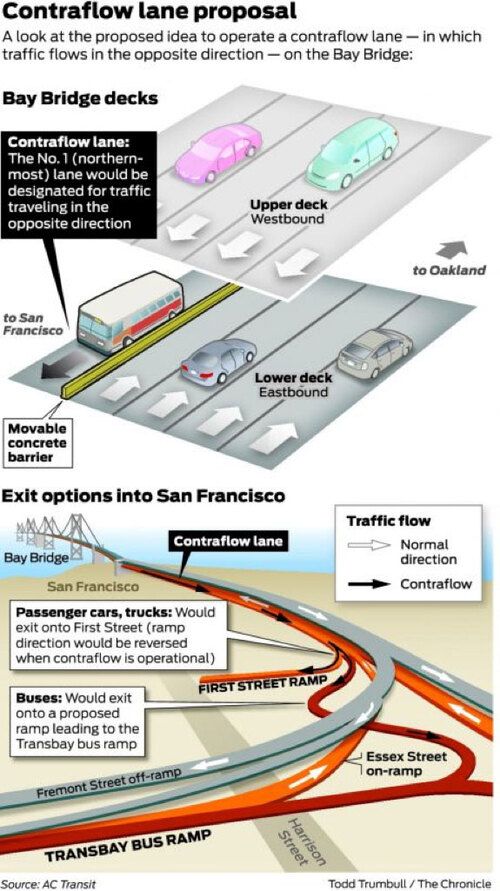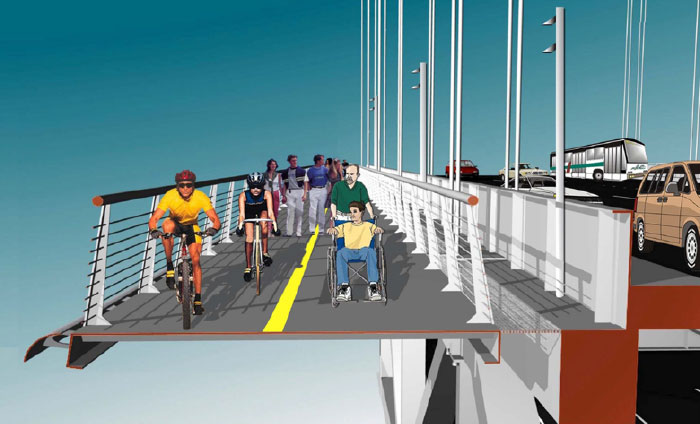Over the past few months, a proposal to build a contraflow bus lane on the Bay Bridge has gained momentum among key transportation agencies such as the Metropolitan Transportation Commission (MTC), BART, and AC Transit. The proposed contraflow lane would convert an underutilized eastbound lane to a westbound bus lane, providing much-needed capacity relief for BART and Bay Bridge commuters by accommodating up to 10,000 new passengers per hour via AC Transit and WestCAT Transbay buses. This total equates to almost the current capacity of the entire upper deck.
A contraflow bus lane, coupled with other service improvements to Transbay buses, makes perfect sense as a short term improvement to the corridor while a long-term solution (a second Transbay Tube) moves forward. However, discussions around a contraflow bus lane should also consider how it could be coordinated with a bicycle and pedestrian path across the western span of the Bay Bridge.
The Bay Bridge has long been considered one of the biggest gaps in the Bay Area’s bicycle network. Caltrans and the Bay Area Toll Authority (BATA) have examined options for a west span bike/ped path several times, including a feasibility study and a project study report. Past studies have found the project to be very costly – roughly a half-billion dollars – which has limited the willingness of policymakers to move forward on the project relative to other critical transportation needs. However, last November, BATA approved a $10 million study to examine preliminary engineering concepts for lower cost designs and hopefully achieve a more workable solution, in coordination with Caltrans.
Both the contraflow bus lane and bike/ped path projects face challenges in connecting to San Francisco. The contraflow bus lane off-ramp could conflict with a proposed residential development at 525 Harrison, which could drive up costs beyond the $51 million – $177 million initial estimate. The bike/ped path’s approach in San Francisco could account for 10-20 percent of the total project cost (according to the 2001 feasibility study); this proportion may be even higher today given increasing costs associated with right-of way acquisition.
A combined bus, bicycle, and pedestrian approach could potentially reduce costs and achieve a win-win solution for both projects. Considering each project within the broader context of a multimodal mobility plan for the Bay Bridge could enable creative solutions that achieve economies of scale. On the other hand, uncoordinated efforts could result in overlapping or conflicting proposals. It is unclear how much collaboration has occurred between MTC, BATA, and Caltrans staff for these projects – each is under a separate contract with different project managers at different stages of implementation. That being said, both studies are being undertaken by the same consultant (Arup), so hopefully these discussions are occurring internally even if they haven’t yet occurred publicly.
It is an exciting time for the future of multimodal transportation on the Bay Bridge. With close coordination between MTC, BATA, and Caltrans, some creative engineering, and a little luck, hopefully both projects will be achieved in the next decade.



